“Small businesses tend to focus too narrowly on diversity. When we talk about ensuring that we’re becoming diverse, it’s in every demographic area, age, race, gender identity and


“Small businesses tend to focus too narrowly on diversity. When we talk about ensuring that we’re becoming diverse, it’s in every demographic area, age, race, gender identity and

ALSO: CATCHING UP WITH TOM SALONEK, FOUNDER OF INTERTECH TIPS FOR PROTECTING YOUR DATA MAINTAINING BOUNDARIES ON YOUR TIME
ability.”
Lisa Hannum, Beehive Strategic Communication


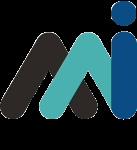



September • October 2023 • Vol. 22 No. 5 • www.upsizemag.com
PAGE 14
In the wake of George Floyd’s in 2020, many companies pledged better efforts at promoting diversity. Has it worked? And how what’s the right way to go about it? Authentic Diversity, Equity and Inclusion (DEI) takes more than just a lunch hour speaker to get right.
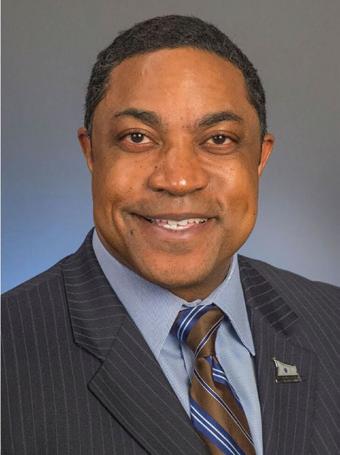

 BY ANDREW TELLIJOHN
BY ANDREW TELLIJOHN
Cover photograph by Tom Dunn
PAGE 4
Founder’s Forum:
Upsize Founding Editor Beth Ewen talks with Nicole Middendorf, founder of Prosperwell Financial, about escaping an abusive situation and living in the moment.

PAGE 4
Staff list:
Who’s who at Upsize magazine and how to reach us.
Upsize Minnesota (USPS 024-029) is published bi-monthly by Broad Axe Media, 2908 W 71 1/2 St., Richfield, MN 55423. Periodicals postage paid at St. Paul, MN and additional mailing offices.
Postmaster: Send address changes to Upsize Minnesota, PO Box 23238, Richfield, MN 55423-0238
PAGE 6
Taking a different approach to your strategic planning process by Sam Smith, Prouty Project
PAGE 8
Increasing data breach frequencies make it more important to protect valuable data by Matt Jurcich, Invisik Corp.
PAGE 10
WELLNESS
Set boundaries around your time and avoid the trap of workaholism by Heather Boschke
PAGE 12
DATA
Small businesses have data too and should use it as a competitive advantage by Christopher Perkins, Digital Symplexity
PAGE 19
SIDEBAR

Small underutilized businesses need to be proactive about chasing business. If they don’t, someone else will, says Alex Tittle, founder of DiversityACT.
PAGE 22
Tom Salonek, CEO and founder of tech consultancy Intertech, discusses his preference for working with smaller clients where his firm can make a difference, competing for talent and building a management team of people smarter than he is.


Credit cards make purchasing convenient and simple. The right card also gives your business purchasing power to drive growth.








Our experts can help make sure you have the right U.S. Bank credit card to meet your business’s spending needs.










Start earning more without doing more. Scan the QR code or visit usbank.com/bankerconnect to request your complimentary analysis and consultation.

FOUNDING PUBLISHER
Wes Bergstrom
EDITOR AND PUBLISHER
Andrew Tellijohn atellijohn@upsizemag.com
FOUNDING EDITOR
Beth Ewen bewen@upsizemag.com
DESIGN DIRECTOR
Jonathan Hankin jhankin@upsizemag.com
CHIEF FINANCIAL OFFICER

Dan O’Connell dano@upsizemag.com
PHOTOGRAPHER
Tom Dunn tom@tomdunnphoto.com
HOW TO REACH US
To subscribe visit www.upsizemag.com/subscribe
With story ideas email Andrew Tellijohn, atellijohn@upsizemag.com
To advertise email Andrew Tellijohn, advertising@upsizemag.com
To order reprints backissues@upsizemag.com
To order extra or back issues email backissues@upsizemag.com
To suggest Web resource links, info@upsizemag.com

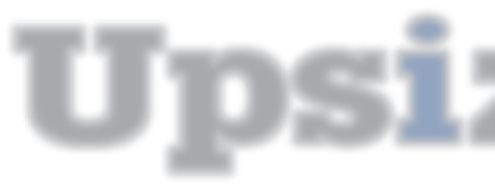
BROAD AXE MEDIA
P.O. Box 23238
Richfield, MN 55423
Main: 612.827.5290 www.upsizemag.com
© 2023 Upsize Minnesota Inc.
all rights reserved
“Today is a hard day,” said Nicole Middendorf this August 4. Because 13 years ago, with two little kids, she gathered the courage to make a 911 call and report domestic violence against her then husband.
I had followed the local radio talk show host and owner of a wealth management firm, now called Prosperwell Financial, for more than 20 years, but only this summer did I learn her harrowing back story. “No one knew. I hid it, as most people do,” said Middendorf, who left Morgan Stanley at age 27 to found her own firm.
“It’s motivating and inspiring and I won’t say sad, but difficult, all at the same time,” she said after her annual fund-raising lunch, which raises money for the Nicole Middendorf Foundation, which supports domestic abuse survivors.
“It’s one of those days—look at how far I’ve come,” she said about the anniversary of her phone call. “I had tried to call numerous times. And before the kids were born, I had tried to get out. But in any type of tumultuous relationship when there’s that cycle of abuse, I went through that way too many years, way too many times.”
What changed? “When it involved the kids. So many victims allow stuff to happen to themselves for so long, but when it involves two little children….” she said. “The more I share my story, the more I can help other people.”
One of those people spoke at that day’s luncheon. The foundation selected her as a participant in its Restart Program, gave her an office space to use, bought her necessities and some Christmas items and helped her get out.
“Just knowing that someone believed me gave me hope,” the woman said, adding that the situation improved immediately for her and her children. “Everything was better. We are still in court, but we can laugh and be happy and we can have friends over for the first time.”
Middendorf calls for nominations each October and selects two women to support with whatever they need, including financial planning advice and volunteer coaches to help with the transformation from victim to survivor. Her latest venture is Live It List, a travel company she named after her own renamed version of the “bucket list” many people pursue before they die. The idea is don’t wait, do it now while you can. For her, that started with driving a real racecar on a speedway in Las Vegas.

“I rappelled down the Ecolab building in St. Paul. This year I took my kids to Africa, they’re 13 and 14. It was an amazing experience,” she said. At first checking off her list “was to give me a distraction, but it boosted my confidence—any time I could swim with sharks, or go dog sledding, or go ziplining, anything I did when I was extremely scared.”
She asks her clients what’s on their Live It List? “What’s the money for? So many times, people just focus so much on the money. We just take a different approach to financial planning,” she said, adding advice for living well no matter your past.
“Life isn’t fair. That’s the thing for all of us. If I can take my experience and use it to help other people, I just believe that’s my why.”
For more information on the Nicole Middendorf Foundation, reach out to hello@nicolemiddendorf.com.
—Beth Ewen founding editor bewen@upsizemag.com
A client-first and conflict-free philosophy: that’s how JNBA Financial Advisors has operated since our founding days over 40 years ago. Since we began tracking in 2001, we have been fortunate to maintain a client-retention rate of 97 percent. And, Barron’s* has ranked JNBA and CEO Richard S. Brown on its Top 100 Independent Advisors list in the country for eight consecutive years.

To learn more about how advice driven by advocacy®could help you and your family, begin a conversation with our team by calling us or visiting JNBA.com.
*As seen in the 8/24/15, 8/29/16, 9/18/17, 9/17/18, 9/16/19, 9/14/20, 9/20/21, & 9/19/22 issues of Barron‘smagazine. Barron‘sis a trademark of Dow Jones & Company, Inc. All Rights Reserved. Please Note: Limitations: Neither rankings and/or recognitions by unaffiliated rating services, publications, media, or other organizations, nor the achievement of any professional designation, certification, degree, or license, membership in any professional organization, or any amount of prior experience or success, should be construed by a client or prospective client as a guarantee that he/she will experience a certain level of results if JNBA is engaged, or continues to be engaged, to provide investment advisory services. Rankings published by magazines, and others, generally base their selections exclusively on information prepared and/or submitted by the recognized adviser. Rankings are generally limited to participating advisers (see link as to participation criteria/methodology, to the extent applicable). Unless expressly indicated to the contrary, JNBA did not pay a fee to be included on any such ranking. No ranking or recognition should be construed as a current or past endorsement of JNBA by any of its clients. ANY QUESTIONS: JNBA’s Chief Compliance Officer remains available to address any questions regarding rankings and/or recognitions, including the criteria used for any reflected ranking. Past performance may not be indicative of future results. Different types of investments involve varying degrees of risk. Therefore, it should not be assumed that future performance of any specific investment or investment strategy (including the investments and/or investment strategies recommended and/or undertaken by JNBA Financial Advisors, LLC (“JNBA”)) or any non-investment related services, will be profitable, equal any historical performance level(s), be suitable for your portfolio or individual situation or prove successful. A copy of our current written disclosure Brochure discussing our advisory services and fees is available upon request. The scope of the services to be provided depends upon the needs of the client and the terms of the engagement. Please see important disclosure information at jnba.com/disclosure.
One of the best parts about being a financial advisor is seeing the individuals and families we work with go from building assets to actually using them to help fund their retirement. Helping clients transition to the stage they’ve been planning for all this time is really rewarding.
Advisor JNBA Financial Advisors
Lucas Traxler, CFP®
choices for staying ahead of the curve in a changing world economy.”
Leaders across industries, company sizes and ownership structures are facing similar challenges in today’s competitive environment. At the same time, these leaders are expressing their desire for a strategic planning process that starts with a blank sheet of paper and recognizes their unique way forward.
From publicly traded to private equity-backed companies to those that are family-run, employee-owned or non-profit, businesses are wrestling with increased regulation, economic uncertainty, continued labor shortages and a need to inspire greater employee engagement.
• “Ensure we have the organizational structure to realize the vision and explore the levers to pull to maintain an accelerated trajectory.”
• “Address succession planning which presents one of the greatest near-term risks facing our organization.”
• “Balance the positive force of stretch goals with the need to experience progress through more attainable goals to ensure people don’t give up in the process.”
1. Set a realistic goal for when you want to break even. This will help you to focus your efforts and provide a numerical benchmark for projecting your cash flow in the near future
1. Consider finding leadership development opportunities for “cultural sparkplugs” - leaders among their peers who have earned the respect of senior leaders and understand the organizational pulse. They can add more diverse perspectives to the strategic planning process.
2. Change is expedited when you open yourself to thought leaders from various fields and disciplines, develop insights from loose connections and open yourself to interrupting patterns, challenging assumptions and shifting perspectives.
2. Put cash flow before profits. It might seem counterintuitive, but if you aren’t organizing your cash flow, you’ll run into problems that a profitable quarter might not be able to fix
3. Secure credit ahead of time. Most small business owners should secure as much credit as possible. This is the best way to be prepared for the unexpected
3. Change doesn’t always happen correctly right away. Leave room for course correction. Remember you can likely do less than you think in the next 90 days and more than you think in 12 months.
4. Consider using a payroll service. Having the professionals take care of collecting payroll taxes saves them an enormous amount of time, helps streamline their cash flow
4. Success comes from stretching our thinking of what’s possible, what’s beneficial and from creating alignment, both within teams and across the organization.
5. Schedule your payments. Don’t go delinquent but do divide your payments into categories such as “must pay,” “important to pay” and “flexible payment terms.” This can help keep sufficient cash on hand.
5. Our culture is meant to fuel our strategy and a culture of commitment drives accountability and team performance.
Through it all, they are asking themselves questions about how they might build better strategies, develop stronger leaders and elevate team performance for sustainable growth.
Over the past several months, we’ve captured the topics that are top of mind for leaders related to strategic growth, team development, innovation and creativity, culture, identity and succession.
Small businesses are usually founded by entrepreneurs who have a unique vision and a passion that drives them to work late hours, take chances and believe in what they’re doing. But, just as Thomas Edison once said that genius is 1 percent inspiration and 99 percent perspiration, successfully running a small business requires rolling up your sleeves and putting in significant time on more mundane, day-today matters.
• “Unite the team and develop our ability to approach each other and clients with greater curiosity.”
• “Ignite creativity to drive innovation and enhance storytelling to bolster a leadership culture.”
Rather than wonder, set a realistic goal for when you want to break even. This will help you to focus your efforts and provide a numerical benchmark for projecting your cash flow in the near future.
• “Rejuvenate our fatigued leadership team who is at risk of burnout.”
• “Learn to respect one another’s point of view.”
Leaders are expressing a need to:
You can be driven, impassioned and have a great idea to fill a niche or serve customers in new ways, but if you don’t attend to the details of the business, you can create for yourself a heap of problems.
• “Move beyond the tactical and into more strategic thinking to capitalize on success and avoid resting on our laurels.”
• “Reenergize new product development efforts to inspire new thinking for creating what’s next.”
• “Transform a group of exceptional individuals into a cohesive and high-performing team.”
Here, we’ll look at one of the most important of these business details: managing cash flow. Especially for early startups, knowing how much cash is coming in and going out, and accurately forecasting sales and expenses, is key to maintaining your company’s health.
No matter where you are in your business, keep these things top of mind:
• “Work through a culture battle between long-tenured employees and individuals who have been with the company a relatively short amount of time.”
• “Develop a renewed sense of purpose and values to help drive a culture that everyone can see and feel.”
Every small business owner keeps at the front of their mind the question:
• “Cast a vision that supports our
• “Break down silos to recognize we’re all on the same team and more intentionally start rowing in same direction.”
This might seem counterintuitive, since profits are how you survive. However, if you aren’t organizing your cash flow, you’ll run into problems that a profitable quarter might not be able to fix. Keep things organized and well managed so you can be ready for whatever success comes your way.
3. Secure credit ahead of time
As you may be navigating similar challenges and opportunities, consider a few concepts we espouse: Engaging the right people in the most creative process will ignite their genius. Deeper curiosity and creativity will uncover new insights. A disciplined approach will help converge on the best actions for achieving desired results.
Engaging the right people is critical to success. One guiding principle is to reach deeper into the organization to gain insights from “cultural sparkplugs.” These are the individuals who are leaders among peers, have earned the respect of senior leaders and generally have their finger on the pulse of the organization.
Too often, small business owners wait until they need it to secure credit. This can cause a lot of unnecessary stress, or worse. Talk to experienced business owners in your area and industry ahead of time to know how much revenue you’ll need up front. Take a realistic look at the situation and plan. You might have sufficient cash reserves or a rich uncle who is only a call away, but most small business owners should secure as much credit as possible. This is the best way to be prepared for the unexpected.
The goal is to create a leadership development opportunity for these individuals and add more diverse perspectives to the strategic planning process.
Create a platform for these individuals to showcase their strategic thinking, own a part of the plan and get exposed to critical components of the strategic planning process. This not only helps to create a more robust plan, but it also increases alignment throughout the organization.
Designing a creative process means focusing on relationships and experiences for elevating clarity, alignment and commitment. Inspired by the Oliver Wendell Holmes quote, “A mind stretched by a new experience can never go back to its old dimensions,” companies should welcome the opportunity to stretch for new results.
When you open yourself to new experiences and new thinking, you start to see new ways forward and begin to make better choices for better results. Change is expedited when you open yourself to thought leaders from various fields and disciplines, develop insights from loose connections and open yourself to interrupting patterns, challenging assumptions and shifting perspectives.
Converging on the best actions for achieving your desired results is dependent on your willingness to make difficult decisions. Create space to dream big and remove constraints to thinking in new ways. Also recognize the value of discipline.
Make decisions for moving forward while building adaptive capacity to course correct as necessary. Remember that you can likely do less than you
think in the next 90 days and more than you think in the next 12 months. Focus on what’s most important today with an eye on tomorrow and avoid the temptation of taking on too much.
All of this for the purpose of unleashing the power of your clarity, alignment and commitment.
Gain clarity on the questions of “Who are we (purpose and values)?” and “Where are we headed (vision)?” Our purpose and values tell us and others about who we are, why we show up and how we show up each day. Our vision should inspire us individually along with the teams we lead and customers we serve, and it should inform our efforts.
Seek to achieve alignment on the choices we will make to live out our purpose and values in the direction of our vision (strategy). Strategy is about the choices we make. Our success comes from stretching our thinking of what’s possible, what’s beneficial, and from creating alignment within the team and across the organization.
Get commitment to move forward together means doing what it takes to effectively chart the course (culture and team performance). Our culture is meant to fuel our strategy and a culture of commitment drives accountability and team performance.
As you move forward in pursuit of clarity, alignment and commitment in your strategic planning, remember to reach deeper into the organization to engage and develop your people, open yourselves to be stretched through new experiences, seek deeper insights and build your discipline for the best action.
Contact: Sam Smith is managing director and senior consultant at Prouty
Project: 952.229.8971; Sam.Smith@proutyproject.com; www.proutyproject.com; in/organdleaderdev

“Remember to reach deeper into the organization to engage and develop your people, open yourselves to be stretched through new experiences, seek deeper insights and build your discipline for the best action.”
Sam Smith Prouty Project
The first-ever reported data breach and loss was an alarming phenomenon that caused great anxiety and mystification over business and personal information being out there in cyberspace.
Installing reliable antivirus, anti-malware software, and regularly scanning your network for vulnerabilities will also boost your security.
Now data breaches are so frequent that we’re almost desensitized when news of an attack or ransomware incident has happened somewhere in the world. Despite significant technological advances in hardware and software security, data threats continue to rise. So much so that even small- and mediumsized businesses are no longer immune.
Whether we are lulled by their growing commonality or not, the fact remains that cybersecurity attacks can lead to financial loss, reputational damage and legal complications.
In June 2023, Verizon Business published its 16th annual Data Breach Investigations Report (DBIR) that provides organizations and businesses with useful information collected from incidents investigated by its Threat Research Advisory Center.
1. Set up automated, encrypted backups of your critical business data to off-site locations, such as remote servers or the cloud.
1. Set a realistic goal for when you want to break even. This will help you to focus your efforts and provide a numerical benchmark for projecting your cash flow in the near future
2. Enable multifactor authentication on your essential programs and systems. This will require hackers to guess not only a password, but also a random second code to gain access.
2. Put cash flow before profits. It might seem counterintuitive, but if you aren’t organizing your cash flow, you’ll run into problems that a profitable quarter might not be able to fix
3. As many as three-quarters of ransomware breaches involve human error. Invest in comprehensive training programs to educate employees on data protection practices.
3. Secure credit ahead of time. Most small business owners should secure as much credit as possible. This is the best way to be prepared for the unexpected
4. Consider using a payroll service. Having the professionals take care of collecting payroll taxes saves them an enormous amount of time, helps streamline their cash flow
4. Encrypt all sensitive financial, health, demographic and contact information before sharing or storing in any electronic format.
5. Conduct regular audits of your data protection measures to identify vulnerabilities and roll out the latest security and software patches as soon as they become available.
5. Schedule your payments. Don’t go delinquent but do divide your payments into categories such as “must pay,” “important to pay” and “flexible payment terms.” This can help keep sufficient cash on hand.
It is crucial for companies of all sizes to stay vigilant in watching for possible threats to their valuable data and to deploy effective strategies that ensure its safety and integrity. The following are best practices businesses can implement to help minimize the risk of data loss.
Small businesses are usually founded by entrepreneurs who have a unique vision and a passion that drives them to work late hours, take chances and believe in what they’re doing. But, just as Thomas Edison once said that genius is 1 percent inspiration and 99 percent perspiration, successfully running a small business requires rolling up your sleeves and putting in significant time on more mundane, day-today matters.
You can be driven, impassioned and have a great idea to fill a niche or serve customers in new ways, but if you don’t attend to the details of the business, you can create for yourself a heap of problems.
Having robust backup and recovery systems is crucial for data disaster protection. Regularly back up your critical business data to secure offsite locations, such as cloud storage or remote servers. Ensure that backups are automated, encrypted and regularly tested to guarantee their integrity and accessibility during emergencies.
Here, we’ll look at one of the most important of these business details: managing cash flow. Especially for early startups, knowing how much cash is coming in and going out, and accurately forecasting sales and expenses, is key to maintaining your company’s health.
No matter where you are in your business, keep these things top of mind:
Every small business owner keeps at the front of their mind the question:
Relying on a single password is no longer a sufficient measure to safeguard your cybersecurity. Reduce your risk by enabling multifactor authentication for all your essential programs and systems. This extra step makes it difficult for hackers to access your data since they not only have to guess user passwords, but also provide a second authentication factor like a temporary SMS short code.
“When
For the 2023 DBIR, Verizon Business analyzed more than 16,000 security incidents and roughly 5,200 breaches. Ransomware accounted for 24 percent of cybersecurity incidents and the number of attacks were higher the last two years than in the previous five years combined. Most pointedly, the report indicated human error was involved in approximately 75 percent of the analyzed ransomware breaches.
Rather than wonder, set a realistic goal for when you want to break even. This will help you to focus your efforts and provide a numerical benchmark for projecting your cash flow in the near future.
Investing in comprehensive training programs to educate all employees on data protection best practices is critical for all businesses. Trainings should particularly include how to handle sensitive information, recognizing potential threats and reporting incidents promptly.
This might seem counterintuitive, since profits are how you survive. However, if you aren’t organizing your cash flow, you’ll run into problems that a profitable quarter might not be able to fix. Keep things organized and well managed so you can be ready for whatever success comes your way.
3. Secure credit ahead of time
Verizon’s DBIR made special note that a company’s senior leadership is becoming a growing cybersecurity threat because too often they are exempted from security measures. Conducting trainings regularly for all employees without exception will encourage a culture of cybersecurity awareness that will help defend against current and emerging threats.
Implement strong data encryption protocols to safeguard sensitive information both in transit and at rest. Data encryption converts readable formats into a code that can only be read when decrypted. All sensitive records such as financial, health, demographic and
Too often, small business owners wait until they need it to secure credit. This can cause a lot of unnecessary stress, or worse. Talk to experienced business owners in your area and industry ahead of time to know how much revenue you’ll need up front. Take a realistic look at the situation and plan. You might have sufficient cash reserves or a rich uncle who is only a call away, but most small business owners should secure as much credit as possible. This is the best way to be prepared for the unexpected.
contact information should be encrypted before sharing or storing in any electronic format.
Limiting user access levels to key systems or restricting user permissions will also help secure sensitive data.
Conduct regular audits of your data protection measures to identify vulnerabilities and areas for improvement. Also, make sure to roll out the latest security and software patches as soon as they become available to ensure that your systems are fortified against emerging threats.
Consider working with a professional IT managed service provider to assure these critical factors are successfully deployed and managed.
Virtual attacks are not the only threats to your data. Safeguard your physical IT network with measures that prevent or mitigate damage from natural disasters or accidents.
This could include installing fire suppression systems and backup power generators. Keeping your backups in secure, offsite data centers is always a good strategy. Creating redundancy in your infrastructure and data storage will help ensure business continuity even in the face of hardware failures or damage to your physical IT network.
Developing a comprehensive incident response plan that outlines the steps to be taken in case of a data loss gives a great advantage to a business. The response plan should clearly define roles and responsibilities, establish commu-
nication channels, and include drills to ensure readiness.
Additionally, create a business continuity plan to minimize downtime and mitigate the impact on your operations. This continuity plan should include procedures for restoring critical systems, prioritizing essential functions and communicating with stakeholders during a crisis.
Review and revise your disaster recovery plans periodically to account for changes in your business environment or IT infrastructure. A common error is developing a complex recovery plan that is difficult to understand and execute. A concise, straightforward plan is more likely to be effective during emergency situations.

Businesses that rely on third-party vendors or service providers should ensure their counterparts have robust data protection measures in place. Contractual agreements should clearly establish that both parties understand their obligations when it comes to data protection. Regularly assessing a vendor’s compliance with security standards will help mitigate any potential risks to your own business.
Unfortunately, data attacks and losses are becoming a permanent feature of our cyberspace landscape. Verizon Business’ 2023 data breach report stated that 95 percent of attacks observed in the past year were financially motivated and hackers no longer care how small the amount—they just want to get something. By prioritizing data loss prevention, your business can safeguard operations, maintain customer trust and mitigate the potentially devastating consequences of data breaches.
“By prioritizing data loss prevention, your business can safeguard operations, maintain customer trust and mitigate the potentially devastating consequences of data breaches.”
Matt Jurcich Invisik Corp.
1. Set a realistic goal for when you want to break even. This will help you to focus your efforts and provide a numerical benchmark for projecting your cash flow in the near future
1. Hustle culture in the entrepreneurial community is new branding for workaholism. Many don’t put enough toward resting.
2. Put cash flow before profits. It might seem counterintuitive, but if you aren’t organizing your cash flow, you’ll run into problems that a profitable quarter might not be able to fix
2. Consider working half-Mondays and half-Fridays rather than one full day off to extend your weekend more manageably.
3. Tell others about your boundaries and plans so they can help keep you accountable for following through.
3. Secure credit ahead of time. Most small business owners should secure as much credit as possible. This is the best way to be prepared for the unexpected
4. Keep your work responsibilities reasonable. Limiting your client count can help make sure you have enough work but also enough time for yourself.
4. Consider using a payroll service. Having the professionals take care of collecting payroll taxes saves them an enormous amount of time, helps streamline their cash flow
5. Whether it’s converting to a four-day work week or simply taking a nap, commit to something that fills up a new and expanding bucket outside your work life.
5. Schedule your payments. Don’t go delinquent but do divide your payments into categories such as “must pay,” “important to pay” and “flexible payment terms.” This can help keep sufficient cash on hand.
As a new entrepreneur with a 22-year runway from corporate life, it was too easy to replicate the back-to-back meetings, weekend email catch-up and long hours considered standard. And while I loved the freedom of being my own boss, the autonomy to craft my own schedule and partner with companies that I chose, I didn’t want to work 70 hours a week anymore — that was part of why I left that life to begin with.
Small businesses are usually founded by entrepreneurs who have a unique vision and a passion that drives them to work late hours, take chances and believe in what they’re doing. But, just as Thomas Edison once said that genius is 1 percent inspiration and 99 percent perspiration, successfully running a small business requires rolling up your sleeves and putting in significant time on more mundane, day-today matters.
I didn’t want the same grueling schedule that I had when I was a W-2 employee. Yet that is exactly what I created for myself in year one of being out on my own. If I wanted year two to look different, I had to establish some boundaries and organize my schedule in ways that supported all the things I enjoy doing, not just the work part.
You can be driven, impassioned and have a great idea to fill a niche or serve customers in new ways, but if you don’t attend to the details of the business, you can create for yourself a heap of problems.
Here, we’ll look at one of the most important of these business details: managing cash flow. Especially for early startups, knowing how much cash is coming in and going out, and accurately forecasting sales and expenses, is key to maintaining your company’s health.
No matter where you are in your business, keep these things top of mind:
And make no mistake — as entrepreneurs we love to work because we love what we do. However, it’s still the thing we do to make money. And what we do to make money is only one aspect of the multi-layered and ever-evolving human being each of us is.
Every small business owner keeps at the front of their mind the question:
There is more to life than the work bucket and the family bucket. Yet we fill and refill those two buckets like no other bucket exists. And
we are so many other things than what we do to make money — even when we love it.
Rather than wonder, set a realistic goal for when you want to break even. This will help you to focus your efforts and provide a numerical benchmark for projecting your cash flow in the near future.
Hustle culture, which persists in the entrepreneurial community, is simply new branding for workaholism. Yet activity and rest go in hand in hand. And if we aren’t putting enough in the rest bucket to balance out the activity bucket, we will burn out. Or worse yet, we may come to resent what we’ve created because it’s become a prison. And the worst prisons are the ones we build ourselves.
This might seem counterintuitive, since profits are how you survive. However, if you aren’t organizing your cash flow, you’ll run into problems that a profitable quarter might not be able to fix. Keep things organized and well managed so you can be ready for whatever success comes your way.
3. Secure credit ahead of time
My goal for 2023 was to get to a four-day work week with my marketing business. I planned to do that by starting my work week on Mondays at noon and ending them on Friday at noon. This schedule extended my weekend in a way that felt more manageable and realistic than simply not working a whole day during the week.
I spent the first few months of the year violating my boundaries and not honoring my time by taking meetings before noon on Mondays and working on Friday afternoons. When you are on your own, it’s quite easy to get away with things. There was no one holding me accountable to what I said was so important to me. Until I started tell -
Too often, small business owners wait until they need it to secure credit. This can cause a lot of unnecessary stress, or worse. Talk to experienced business owners in your area and industry ahead of time to know how much revenue you’ll need up front. Take a realistic look at the situation and plan. You might have sufficient cash reserves or a rich uncle who is only a call away, but most small business owners should secure as much credit as possible. This is the best way to be prepared for the unexpected.
ing other people about my four-day work week. And when asked how it was going, it was not fun to tell others and remind myself that I wasn’t there. Because that meant I wasn’t prioritizing myself.
In April of this year, I finally got my four-day work week. Here’s how:
• Blocking Monday morning and Friday afternoon. My calendar literally says, “DO NOT VIOLATE.” Simply blocking the time wasn’t enough – but seeing the words “do not violate” keep me honest to protect this time. Note, no one else sees this love note to myself, only me.
• Taking less client work. Last year I had eight clients at one time, which was overwhelming and not much fun. Now I know that having three to four clients at one time is a beautiful, sweet spot that makes me feel full yet I can still breathe.
• Structuring my weeks so that I was allocating the right amount of time to client work and things that needed to be done for the business (right now this is a 70/30 split of my work week).
• Networking time gets a specific one-hour time block of two 30-minute meetings each week. This is pure networking to meet new people or help those in transition – this is NOT business development networking.
A key to achieving this four-day
work week was getting honest about my priorities. In my heart, I knew this schedule was more important to me than additional clients or more money. And the extra day I have each week I use to light up the other things that set my soul on fire:
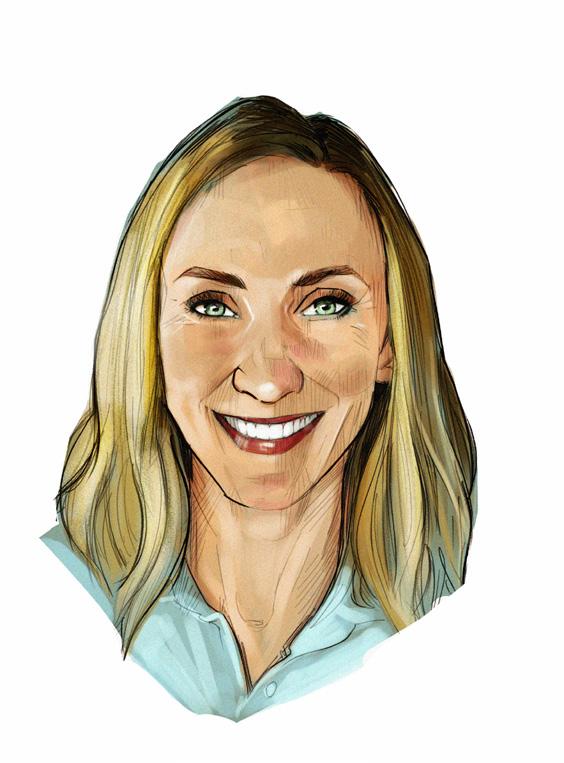
• Going birding
• Drawing birds
• Naps (I’m a huge fan of a daily 17-minute nap)
• Reading
• Playing with our new rescue dog Fitz (did you know that interacting with animals can lower your blood pressure and boost your mood?)
As business owners we are so lucky that we get to do what we love. But it’s important to remember that we are full humans with many different loves, passions and interests. And when we fill up the other buckets of our life, that makes what we do in the work bucket that much more fulfilling and impactful. And while a four-day work week may not be your jam, commit to something that fills a new and expanding life bucket. Or simply prioritize the things you know are good for you that will make you a happier human … and may I suggest a nap?
Entrepreneurs know how to challenge the status quo. Let’s not forget that we can also write our own rules.
Contact: Heather Boschke is founder of Vogel Venture and author of Little Birdie Buddies of Minnesota: 612-327-7735, heather@vogelventure.com, www.vogelventure.com; www.littlebirdiebuddies.com; in/boschke,
“There is more to life than the work bucket and the family bucket. Yet we fill and refill those two buckets like no other bucket exists. And we are so many other things than what we do to make money”
Heather Boschke Vogel Venture
This article originally ran in Jan/Feb 2018
“If I only knew then, what I know now!” This wail of frustration from the corner office is typical after a mission critical event refocused company resources to address issues resulting in lost revenue — or worse — lost clients.
system and other applications that support your business operations provide mountains of meaningful data. And the amount grows daily. When you use systems to manage your business, you HAVE data. Put that data to work!
1. Set a realistic goal for when you want to break even. This will help you to focus your efforts and provide a numerical benchmark for projecting your cash flow in the near future
1. Growing businesses need to use their data to compete.
2. Put cash flow before profits. It might seem counterintuitive, but if you aren’t organizing your cash flow, you’ll run into problems that a profitable quarter might not be able to fix
2. Your contact management program, accounting software, inventory system, cloud and other applications that support your business operations provide mountains of meaningful data.
3. The key factor in profitability is making processes work better to deliver products and services faster and less expensively.
3. Secure credit ahead of time. Most small business owners should secure as much credit as possible. This is the best way to be prepared for the unexpected
4. Through process mining, you learn not only what is going on in your business, but what could be happening. You see problems in your processes and possible ways to improve.
4. Consider using a payroll service. Having the professionals take care of collecting payroll taxes saves them an enormous amount of time, helps streamline their cash flow
5. Schedule your payments. Don’t go delinquent but do divide your payments into categories such as “must pay,” “important to pay” and “flexible payment terms.” This can help keep sufficient cash on hand.
5. As your business grows, process mining can help keep up with processes as they become more complex and as your data points quickly multiply.
Small businesses are usually founded by entrepreneurs who have a unique vision and a passion that drives them to work late hours, take chances and believe in what they’re doing. But, just as Thomas Edison once said that genius is 1 percent inspiration and 99 percent perspiration, successfully running a small business requires rolling up your sleeves and putting in significant time on more mundane, day-today matters.
Historically, small- and mediumsized businesses have managed these events faster than their larger competition. Growing businesses have less complicated processes and fewer variables affecting how they record customer orders, deal with suppliers, manage inventory or deliver an end product. They adjust more nimbly and react faster to new market dynamics.
This ability to “turn on a dime” like a Formula One car gives smaller organizations an edge. But process mining is allowing larger organizations to be more responsive to the marketplace.
WAIT … Process Mining? What’s this new buzz word? Are smaller companies losing their advantage?
You can be driven, impassioned and have a great idea to fill a niche or serve customers in new ways, but if you don’t attend to the details of the business, you can create for yourself a heap of problems.
Not yet, but using process mining on the massive amount of data owned by big companies is giving them more insight into their business operations. They may not be turning on a dime, but they are turning their convoy of 18-wheelers much faster. Growing businesses need to use their own data to compete.
Here, we’ll look at one of the most important of these business details: managing cash flow. Especially for early startups, knowing how much cash is coming in and going out, and accurately forecasting sales and expenses, is key to maintaining your company’s health.
No matter where you are in your business, keep these things top of mind:
What is “Big Data” in a small company?
1. Know when you will break even
Every small business owner keeps at the front of their mind the question:
If you’re saying “I’m a relatively small company. I don’t have a lot of data,” take another look. Your contact management program, accounting software, inventory
It’s Google Maps™ for your business.
“When do I start to turn a profit?”
Rather than wonder, set a realistic goal for when you want to break even. This will help you to focus your efforts and provide a numerical benchmark for projecting your cash flow in the near future.
Think about driving to the airport on a dark snowy morning with icy roads; your usual route is going to be slow and you’ll miss your flight. You access Google Maps, select the fastest route based on current conditions and update regularly to watch for new problems.
2. Put cash-flow management before profits
Process mining helps you figure out the fastest way to implement your key business processes to arrive at a good bottom line. It identifies the detours your processes may take, the bottlenecks and the delays affecting your business.
This might seem counterintuitive, since profits are how you survive. However, if you aren’t organizing your cash flow, you’ll run into problems that a profitable quarter might not be able to fix. Keep things organized and well managed so you can be ready for whatever success comes your way.
3. Secure credit ahead of time
An order process can take multiple routes, each of which takes a different amount of time, which can alter the cost of delivery significantly. The more efficient your route, the more money you save. Process mining will pinpoint those key problem areas so you can analyze and improve them, saving both time and money.
Process mining software allows a company of any size to move away from using a handful of Key Performance Indicators to understanding how its business actually operates. Process mining uses the data in the log files of your systems and automatically maps:
Too often, small business owners wait until they need it to secure credit. This can cause a lot of unnecessary stress, or worse. Talk to experienced business owners in your area and industry ahead of time to know how much revenue you’ll need up front. Take a realistic look at the situation and plan. You might have sufficient cash reserves or a rich uncle who is only a call away, but most small business owners should secure as much credit as possible. This is the best way to be prepared for the unexpected.
• Each activity in a process
• When each activity takes place
• How long it takes to go from one activity to another
• Every variation the process could take
What an army of consultants would take months to report is being replaced with process mining. You get faster and more accurate results because you’re using unbiased data. You learn not only what is going on in your business, but what could be happening; you see problems in your process and possible ways to improve.
In a small business, you may have an intuitive idea of what your data is telling you: what processes are working, where the bottlenecks are and what changes need to be made. But as your business grows and the marketplace changes, the processes become more complex and the amount of data grows exponentially.
The key factor in profitability is making processes work better to deliver products and services faster and less expensively.
1. Ask the obvious questions. What kind of processes are in place? Are they working?
Consider:
• Business Activities: Which parts of my processes take longest? Which cost the most? Are they the same? Am I paying late fees, cost overruns?
• Clients: Who are my most profitable clients? How do we go from initial contact to completed sale? How do we follow up? How long does it take to get a contract?
• Suppliers: How long do they take to get materials to me? Who is the
best? The worst?
• Employees: Who manages tasks the most efficiently and effectively? What affects their performance?
Knowing the answers to these questions and how they interrelate enables you to see what needs to change. Poor ordering systems result in late supplies. Late supplies result in late deliveries. Late deliveries result in unhappy clients. Unhappy clients result in lowered profitability.
Solving these process problems may significantly add to your bottom line.
2. Establish a culture of continuous improvement.
The best part about being in a growing company is the relative ease of personperson communication. As a company grows, more employees are involved in successful business operations. Process mining provides the foundation for continuous process improvement and significantly increased profits.
3. Select flexible data technology tools. Your data gathering tools need to track three characteristics:
• Activity taking place
• Which process is associated with the activity
• Time and date stamp
With that information, and other basic information residing in your systems, you can discover the different variations to your processes, pinpoint issues and make necessary changes.
Consider process mining as your business grows. Keep your competitive edge. Maintain your agility, your ability to respond quickly to new events. With process mining, you will know now what you need to do in the future.
Christopher Perkins is a partner at the process mining and business optimization consultancy Digital Symplexity: 612.644.2900; cperkins@digitalsymplexity.com; www.digitalsymplexity.com
“ Consider process mining as your business grows. Keep your competitive edge. Maintain your agility, your ability to respond quickly to new events. With process mining, you will know now what you need to do in the future.”
Christopher Perkins, Digital Symplexity
Beehive Strategic Communication helps business owners solve complex challenges thus helping them grow. But the communications firm has been working for more than a decade to do a better job on its own of being conscious of diversity, equity and inclusion (DEI) as part of its business practices.
“It was not something that was sparked by social change specifically or by a George Floyd event,” says Lisa Hannum, founder and CEO. “We operate from a clear company purpose and values. Growth-minded equity is a key value for us. That lays the foundation for who we say we are as a company.”
Beehive also increasingly coaches its clients on DEI issues, as well, helping them understand and identify their values in business.
“So, it’s employees, it’s partners, it’s vendors, it’s customers and the communities you operate in,” Hannum says. “That could be your
by Andrew TellijohnDiversity planning is becoming necessary for business purposes, whether it comes to hiring younger employees or competing for certain contracts, says Lisa Hannum, owner of Beehive Strategic Communication

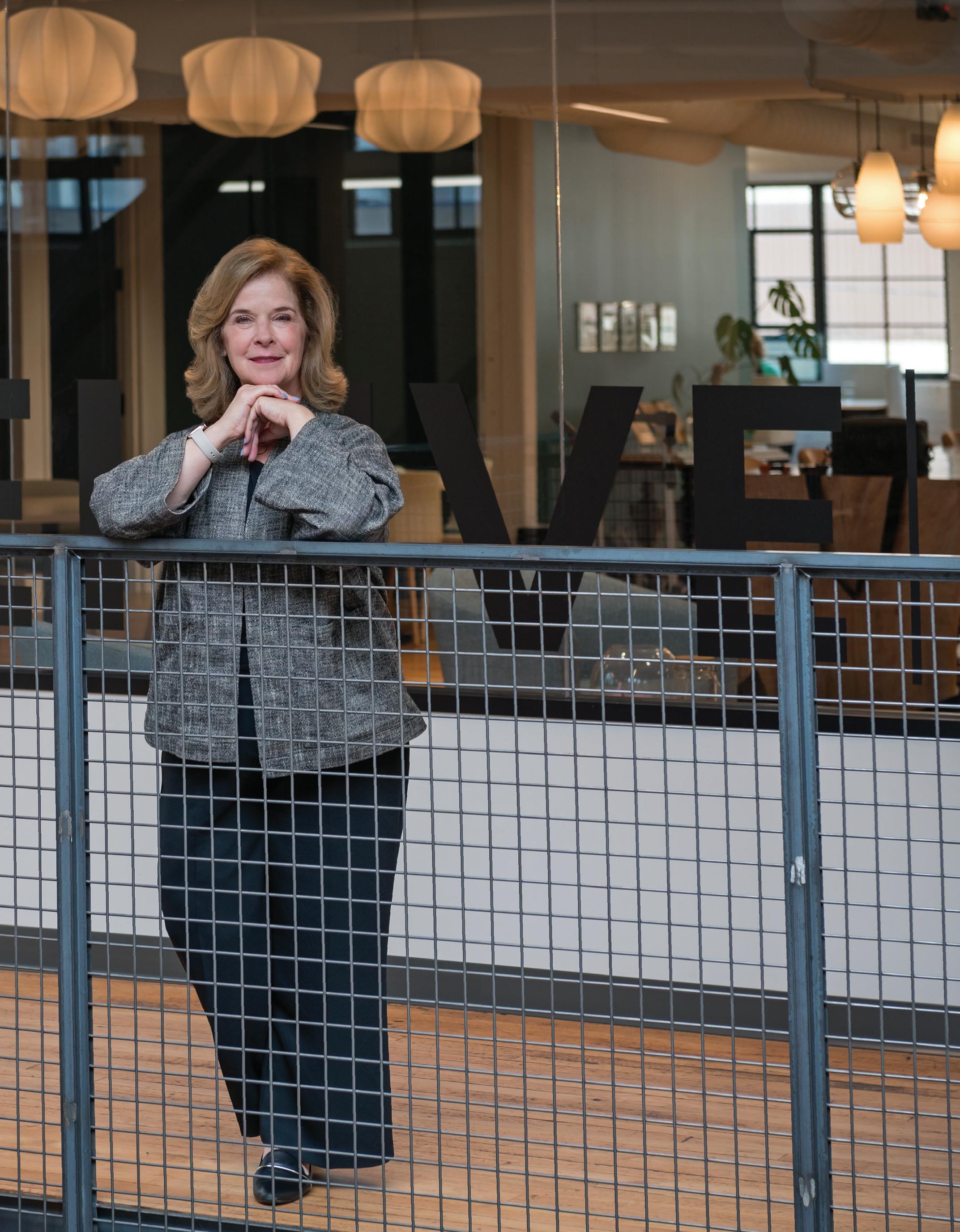
geographic communities, it could be professional communities that your business is part of — we look at communities as sort of these ecosystems that surround me. And so that behavior contract goes both ways.”
So, given Beehive’s culture and its commitment to doing right on diversity, how did the company go about it? For one thing, it got certified.
B Corp Certification, overseen by B Lab, aims to provide companies with programs and tools necessary to understand their environmental and social impact. The organization works with companies of all sizes on working toward the goal of making all business a force for good, according to its website.
B Lab has free assessments available to help clients measure, manage and improve their impacts. There are about three dozen companies with ties to Minnesota that have been certified.
“What it did was give us this incredible assessment tool that provides a comprehensive and rigorous roadmap. And they dig in on policies and workers and vendor diversity,” Hannum says. “It’s a really great roadmap for companies of every stage and every size.”
Both Beehive and its clients utilize the tools to ensure they are widening their focus and not searching too narrowly when recruiting employees and clients, she says, indicating that many employers and small business leaders throw up their hands and say there aren’t any options in Minnesota without recognizing how diverse a state it is.
“Small businesses tend to focus too narrowly on diversity,” she says. “When we talk about ensuring that we’re becoming diverse, it’s in every demographic area, age, race, sex, gender identity and ability.”
As of yet, Beehive’s employees are largely white, but Hannum says there are leaders in the organization from the LGBTQ-plus community, there’s diversity in age and
people who are neurodiverse.
“That’s what the social contract is becoming for employers,” Hannum says, adding that it’s not only a legal expectation that people from these communities will have fairness, but also an expectation of younger workers — future leaders — that this will be true.
“For [Generation Z] and millennials, what small businesses have to think about is, this is our workforce today and certainly of the future,” she says. “And when it comes to social contracts with Zs and millennials, they are not up for negotiating diversity, equity and inclusion. It’s simply who they are.”
While Beehive has been working on its diversity efforts for many years, DEI efforts spiked three years ago in the wake of George Floyd’s murder in Minneapolis. Sara Taylor got a lot of calls from companies wanting her to speak on diversity for a half-hour at a team meeting.
There was also an uptick in reach-outs from companies saying they really wanted to do it right. Some have followed through. Some have not, citing economic challenges or the war in Ukraine.
“There has definitely been a retraction in the last year or so,” says Taylor, president and founder of deepSEE Consulting.
Those that stick with it, she says, often don’t realize going in the commitment it will take to do it right or the transformational nature of the process.
“They think of it as just, ok, we just need to focus on recruitment and be more diverse or we just need to have a couple trainings and then that’s it,” she says. “Our approach is about we follow research that shows levels of actual competence and how we see and respond to complexities of difference.”
What that means is that without developing true compe-
“When it comes to social contracts with Zs and millennials, they are not up for negotiating diversity, equity and inclusion. It’s simply who they are.”
— LISA HANNUM, BEEHIVE STRATEGIC COMMUNICATION
tence, you’re not truly going to organically bring in diversity or create inclusion.
“The vast majority of individuals in almost every single organization are operating at the lower levels of competence,” she says. “The mistake organizations make is to go about the work before doing that development. It’s kind of like giving me a Ph.D. level math test but I haven’t taken a math course beyond the first year of college.”
That starts at the top with leadership, Taylor says, adding that she almost never sees an organization more developed than its leaders’ levels of qualification.
“Commendable leaders are taking on first their own awareness of their unconscious filters and how they’re making ineffective decisions,” she says.
The second step is making sure diversity efforts aren’t just checking a box but are truly developmental. Whether it’s hiring staff, finding vendors or some other area, data drives the process, not guesswork, Taylor adds.
“We’ll do a data driven analysis, not just a hunch-driven or guess-driven or a ‘what is another organization doing’ driven analysis that looks at every step in the selection process,” she says. “Do they pass the minimum qualifications?
Beehive Strategic Communication works internally on practicing DEI and is increasingly coaching its clients on the importance of diversity, as well.

What’s the next step? Did they make it through the first interview? Did they make it through the second? Did they get the job offer?”
At each step, deepSEE looks at whether the results met the organization’s goals and was reflective of the available pool of candidates.
If, for example, the percentages add up all the way through the process until the hire, she says, “That says it’s not about recruiting. It’s not about the available pool. Where it does fall off is when the hiring managers get involved,” she adds. “And it’s not because these folks are bad people. It’s not because they are saying ‘Oh, no, we don’t want diversity. It’s because they haven’t developed. It’s because they don’t even realize how they are not seeing the best candidates.”
The
Museum of Minnesota has spent significant time and effort working to diversify all aspects of the organization, from those sitting on its board to those who enjoy its exhibits.
Taylor has had hiring managers tell her after going through the training program that they thought they were hiring the best person regardless of demographics, only to learn they didn’t know what they should have been looking for.
She says it’s not about revealing a business owner’s or hiring manager’s personal flaws. It’s about building organizations up to ensure everyone is on a level playing field and that companies actually do bring in the best people.
“That intervention is to develop your hiring managers and give them specific tools they can use in that hiring process,” she says.
One organization that worked with deepSEE to fine tune its internal diversity efforts is the Science Museum of Minnesota, which engaged trainers to work with several inclusion coaches the non-profit had identified within its existing staff.

The trained Science Museum staffers executed an intercultural development inventory, the results of which were used to create programming aimed at deepening the understanding of DEI.
“They (staff) don’t have an accountability to the coaches,” says Juliette Francis, vice president of mission advancement at the Science Museum. “But certainly, the coaches are available should they want to engage more deeply.”
The organization also worked on and implemented an organization-wide equity and inclusion statement that included acknowledging that the institution, established in 1907, was founded and shaped in a system of oppression.
“The white supremacy culture is very well within the framework of our existence,” she says. “Intentionally calling that out has helped us to say, ‘This is what happened, now where do we want to go with that?”
In order to refocus its own efforts, the Science Museum has engaged with the American Alliance of Museums which has a focus on racial equity in order to help refocus its own efforts. It also reviewed all job descriptions to make sure

When Super Bowl LII was played at U.S. Bank Stadium in February 2018, Alex Tittle didn’t play a down on the field, but he had more than three-years of impact on the experience.
Tittle was vice president of the Business Connect Program and corporate affairs for the Minnesota Super Bowl Host Committee and he spent the bulk of his time educating small businesses on how to do business with the NFL and its subsidiaries in preparation for and, particularly, on Super Bowl weekend.
“It was fun,” he says. “It was probably one of the most rewarding jobs I’ve ever had. It was one of those once-in-alifetime opportunities to take you away from the act of doing work and actually getting things done.”
Prior to that, he worked as equity director for the Minnesota Sports Facilities Authority, where he taught underutilized minority- and women-owned companies to compete for business in the design, construction and operation of U.S. Bank Stadium.
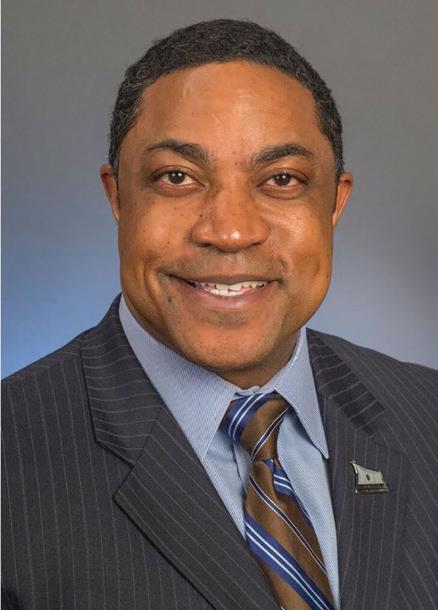
He’s widely credited for helping the authority award nearly 30 percent of the $1.1 billion project to those firms.
Now a diversity consultant, Tittle has some advice for small, underrepresented companies looking to get work: There’s no one cookie cutter solution that will make everything better, but one thing that always helps is getting out in the community and meeting people.
and the trust that comes with it, if they are going to hire your firm to work with them, you need to do your part and stay in touch. “It’s a two-way street.”
As the small business trying to work with a larger firm, it might be appropriate to take it a step further and ask for some hands-on assistance on a recurring schedule.
“I’m going to try to learn as much as I can from you and I’m going to ask, ‘Would you mind mentoring me?’” Tittle says, adding that this is just as much about building a personal relationship as it is about work. “We call this the trust building exercise. We’re not necessarily going to talk about the business. I want to know about your home life. I want to teach you about my home life and where I come from so we can start to develop some cultural understanding.”
It’s also good for both small and large businesses to know about and participate in business development associations and other organizations, such as ethnic chambers of commerce, veteran-related business or women’s business organizations.
Locally, the Metropolitan Economic Development Association is another good organization with financing options and other resources to tap into. Several banks and other organizations work hard to put teams together.
If companies don’t embrace the increasing diversity in the U.S., the country is doomed to repeat issues from the past, says Alex Tittle , head of DiversityACT.

“There are banking institutions that have business development entities and they host activities, summits and events,” Tittle says. “They encourage large and small businesses to be a part of it, to help synergize and develop relationships.”
But be proactive and go to work building your business. “You’re not going to just show up and put your hand out,” he says, adding that if you don’t, someone else will. “Small businesses don’t need a handout. They’re smart. The bedrock of this country. They know how to do the job. They just need the opportunity.”
“The one thing for certain is that relationships are key,” Tittle says, adding that it’s not enough to just meet someone. “If they are going to build a relationship
“They’re going to make or break you as a business, if you are not good at socially engaging, networking and maintaining relationships.”
Science Museum officials know they haven’t achieved all their diversity goals but remain committed to the process of working toward equality.

their expected credentials are actually valuable to the job and reviewed pronouns in order to be as accessible and welcoming as possible.
The museum, Francis says, has received some positive feedback and made some progress in reducing barriers to participation from minority communities.
One example relates to board representation. Its male-tofemale ratio had been about 70-30 but is now closer to 5050. Representation of Black, Indigenous and people of color (BIPOC) is close to 40 percent, up from the low 20 percent range when the work started about seven years ago. Hiring of minorities has also increased.
“We’re making progress,” she says.
But then she adds that it’s been a learning experience that
has come with mistakes and that there is still a way to go.
“We have not achieved what we set out to do,” she says. “We learn, we stumble along the way. We learn from those moments. I think that’s an important piece as it relates to our values of equity, learning and collaboration is, this is not a through line. It’s not sequential like you go here to here. This work is work that will far exceed my lifetime. It’s iterative. The risk of doing nothing is not ok. You have to do it, but it will never be perfect.”
While others teach through data, Chaz Sandifer has been trying to help business owners learn from each other through the power of conversation.
Sandifer, founder and CEO of theNEWmpls, left corporate America 10 years ago to start a few businesses. TheNEWmpls focuses on racial health and equity through the lens of fitness, wellness and nutrition.
She comes from the perspective of a young Black woman who was raised in Edina by two parents in an upper-middle-
Properly addressing diversity requires a statistical analysis of every step of the hiring or partnership process, says Sara Taylor, founder and CEO of deepSEE Consulting.
class household. But Sandifer is well aware of others who did not have the same access.
Her company partners with chefs to bring nutritionfocused tips to the community, hosts a book club to focus on the mind and offers Wellness Wednesdays for Let Go Let Flow discussions during which white women and Black women participate in panel discussions covering topics of common interest.
“There’s a lot of healing and there’s a lot of turmoil on both sides that we need to bridge a gap,” she says. “We are the pillars of our home, regardless of whether there’s men in the home, we’re there. We are building the foundation.”
Sandifer also started these events as a way to bring together people from different backgrounds to learn from each other.
“It’s a lens of us coming together in a positive way,” she says. “We know the negative. So, we lead with empathy and love and have true storytelling and healing through all of that.”
While bringing diversity to the workforce is fair and just, there can also be a strong business case. Taylor says
Juliette Francis is vice president of mission advancement at the Science Museum of Minnesota: 651.221.2532; jfrancis@smm.org; www.smm.org; in/inspieringu
Lisa Hannum is CEO at Beehive Strategic Communication: 651.789.2232; info@beehivepr.com; www.beehivepr.biz; in/lisa-hannum
Chaz Sandifer is founder and CEO at theNEWmpls: www.thenewmpls.com; in/thenewmpls
Sara Taylor is CEO and founder of deepSEE Consulting: 651.436.8555; sara@deepSEEconsulting.com; www.deepSEEconsulting.com; in/sarajanetaylor
Alex Tittle is founder of DiversityACT: alex@diversityact.com; www.diversityact.com; in/alextittlediversityactllc
research shows most people have few connections in their network with people who are different from them.
“If we continue to look in our own networks, we are going to miss,” she says, adding that when you care about and see the importance of diversity, equity and inclusion, you’re going to attract employees — and customers — who are different.
“Right there, that’s a competitive advantage, that I’ve got a broader pool, that I have people that are more happy, more engaged — because that’s what inclusion is, folks that are more engaged,” she says.
Furthermore, says Hannum, many small businesses want to identify as such for various certifications. In doing so, they are often being required to report on diversity, equity and inclusion numbers, programs and activities as part of maintaining those certifications or, in many cases, to qualify as a partner with many other businesses.

“If you do not meet their expectations, you’ll not be eligible for their business,” she says. “The business case is clear. You understand that and you move what’s possible to develop and grow your business or you don’t.”
Finally, demographics in the U.S. are changing, adds Alex Tittle, founder of DiversityACT. While it’s incumbent upon minority-owned businesses to do their part, to reach out and to do good work, he remains frustrated by those companies and leaders that have fallen back into the same habits of underutilizing potential partners from marginalized communities.
“We’re becoming a more diverse country,” he says. “If we don’t embrace the more diverse country and more open understanding of other cultures and communities, we’re doomed to repeat issues that our country has had over the last 150, 200 years.”
Tom Salonek founded tech consulting firm Intertech in 1991 out of his spare bedroom after finding his previous job demoralizing.
The first man in his family to go to college, he’d built the business to 70 employees and $14 million in revenue by 2017, when he was Upsize’s Business Builder of the Year.

It’s continued to be a steady sixyear climb since. Intertech enjoyed a record 2022, bringing in $16 million in revenue and continuing to build strong account diversity and retention on the technical and sales and marketing sides of the business.
More than 90 percent of its revenues come from consulting and application development, where companies contract with Intertech to build software.
There have been a few times over 30-plus years where the company has looked at building its own framework for a product it could market and sell independently in bulk, but it’s a different business
Tom Salonek started Intertech in 1991 after having a bad experience at his previous job.
from selling a service, Salonek says.
Intertech’s customers have included Wisconsin-based retailer Menard’s and the Minnesota Bureau of Criminal Apprehension.
“At the end of it, it’s work for hire,” he says. “They own it and we do not have a financial interest in what we build.”
While the company has done work for large entities like NASA, 3M, Microsoft and several branches of the U.S. military, Salonek prefers working with smaller and mid-market companies, where it’s possible to build relationships and make a tangible difference.
“If I was to go to my class reunion and say the names of our customers, most people would scratch their heads and say, ‘I’ve never heard of it,’ although that could be a sevenfigure customer for us,” he says.
It’s harder with larger organiza -
tions, where when bidding “you are rated on how cheap you are and how quickly you can start throwing applicants at them,” he says. “When we work with a mid-market com -


pany and we build something that is significant to them, that really moves the needle. That’s where we build long-term relationships with customers.”
Intertech did lay off a few employees during COVID, but survived in good shape. Most employees, including Salonek, already were working remotely at least part time.
“We were good to go,” he says of the sudden flip to 100 percent remote work. Now, when he does go in the office — far less frequently than the three days he went in prior to COVID — there’s only a smattering of employees.
“I think people really like the flexibility of being able to duck out for a dentist appointment in the middle of the day or have lunch with their kids,” he says. “When things got bet-

Description: IT service and consulting company that creates custom software primarily for small- and medium-sized businesses
Headquarters: Eagan
Founded: 1991
CEO: Tom Salonek
Employees: About 80
Website: www.intertech.com
ter and we could be back together in person, there were some people that said, ‘If you force me to come into the office I’m going to quit.’”
A nearly empty building might present a problem for some, but Intertech owns its space. Its balance sheet is in good shape. And, because customers have gotten more flexible about not needing employees in the office full-time as well, the pandemic actually opened it up to take on both employees and clients spanning a wider geographic reach.
Intertech is running so well, Salonek says, that while he stays connected with his team, he’s increasingly been able to step back, exit overseeing the day-to-day operations and make sure he is present for his teenage kids.


He’s built a strong leadership team with solid educational and professional backgrounds who know the
business and complement him.
They have one-on-one meetings every other week and talk at the end of the day three days a week to make sure everyone is aligned. They have also invited all employees, local and remote, to the office for some business and leisure meetings.
“They’ve been around a while and they’re really good at what they do,” he says. “Those things really allow me to not be involved in the minutia of the day-to-day but still be very aware of what’s going on in the organization.”
That’s not to say there have not been challenges or changes. Intertech did, for example, exit the face-to-face
Contact: : Tom Salonek is CEO and founder of Intertech: 651.288.7000; www.intertech.com; in/tomsalonek
work and socially.
or live instructor-based education business, which had already gotten tougher prior to COVID.
“With the sub-35 demographic, when it comes to learning, if you said, ‘You have to learn something technical, what would you do?’ sitting down in a classroom for three to five days doesn’t make the list,” he says. “It’s like, ‘I’d use YouTube, I would look at a coding site, I would get an on-demand whatever.’ We occasionally do delivery through a partner, but we do not proactively sell any of those education services.”
Intertech also had to streamline what he’d previously called an eight-step hiring process. Born
from some early hiring mistakes, Salonek created a detailed process that asked between 20 and 30 hours of a candidate’s time. The last couple years, as hiring has gotten tougher, he found applicants often would arrive at interviews already holding a couple offers.
The company still utilizes all of the steps, which include team interviews, technical interviews and personality assessments. Salonek doesn’t make offers to someone who has not interviewed because he believes the amount of time employees spend together warrants some time spent upfront getting to know each other.

But where the steps used to be separate and days apart, they’ll now go through multiple steps in the
he worked with his colleagues and a recruiting team on the streamlining.
It feels like the middle ground, he says. He can make sure that as the company grows, the culture evolves with it. With strange things happening in hiring, like people hiring proxies to interview for them, Salonek says some time upfront is a worthwhile investment even if it costs him a hire.
“When you look at this revised process and they still say, ‘I’ve got two in hand, I just want an offer,’” he says, “Well, then you’re not a good fit because culturally we’re not there.”

“When we work with a mid-market company and we build something that is significant to them, that really moves the needle. That’s where we build long-term relationships with customers.”
Tom Salonek Intertech
6600 France Avenue South, Suite 125
Edina, Minnesota 55435
Ph: (952) 285-5800
www.crown-bank.com




• Jeff Wessels, President & COO
At Crown Bank, we want to be partners in your possibilities. Because possibilities are what the future is made of. From something as personal as growing your savings, to something as big as growing your business, our bankers and staff have the expertise and energy to partner with you to make that happen.
Member FDIC





Tesh Patel
Email: pritesh.patel1@usbank.com
Phone: 720-667-7578
At U.S. Bank, we help you earn more without asking you to do more. That means more money, more purchasing power and more expertise, so you can focus on running your business. Let us find the best business credit card for you and turn your hard work into easy money.
7825 Washington Ave So, Suite 120, Bloomington, MN 55439 Phone (952) 698-6274
We help business owners achieve their exit goals. True North Mergers and Acquisitions serves companies with $5 million to $150 million in revenue and their strategic advisors. We specialize in business owner exits, business valuations, and acquisition services in the lower middle market. If you are considering exiting your company, contact our team today.


838 S Lake Street, Forest lake, MN 55025 Office 651-899-2002
www.threepillarsbookkeeping.com
We offer a full range of bookkeeping, Payroll and accounting services, such as entering and paying bills, invoicing, recording deposits, reconciliation and updating vendors and customers. We’re your outsourced CFO, affordable to retain with no loss of quality.

Peggy DeMuse, pdemuse@sunbeltmidwest.com
651-288-1627
Lisa Meyer, lmeyer@sunbeltmidwest.com
612-361-4918
www.sunbeltmidwest.com
Thinking about buying or selling a business? Sunbelt is the world’s largest seller of private companies. We work with business owners to help them understand the current value of their business and how to maximize their net proceeds at the time of sale. Sunbelt will provide business owners with a completely confidential, no-obligation value range.

Cathy Sedacca, managing director 612-802-1784 (c)
Cathy.Sedacca@integrated-consulting.net
www.integrated-consulting.net

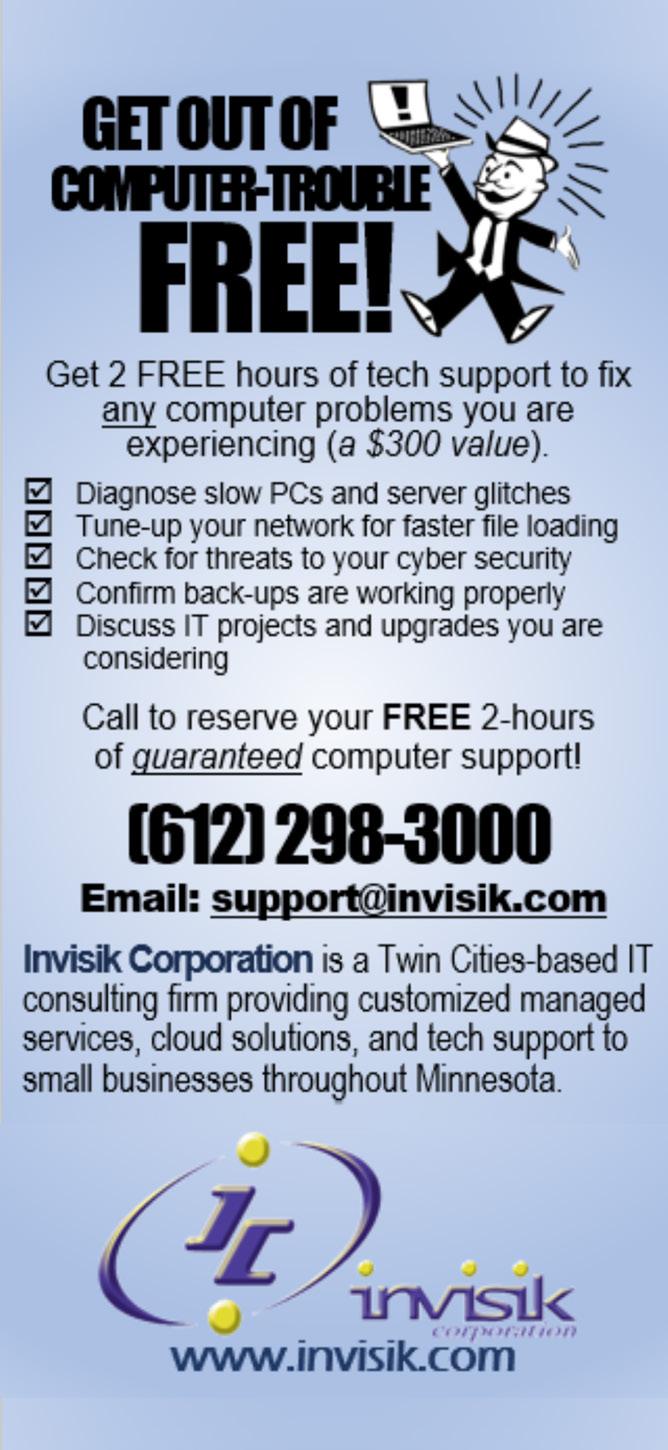
Integrated Consulting delivers Chief Financial Officers to small businesses on a fractional basis. From projections to cash flow tools to assistance with all things financial. We provide 30 years of expertise on a small business budget.
• Best Practices to Grow Enterprise Value


• Business Owners Share their Exit Stories
• Learn what it takes to exit on your terms!
• Guests share need-to-know advice for lucrative outcomes
• Episodes are all under 30 minutes
Subscribe on Apple, Spotify, Google, iHeart, Stitcher




Sponsorship Opportunities!
Download episodes and order the book! https://www.poisedforexit.com/

651-368-2047 www.tomdunnphoto.com
Tom Dunn tom@tomdunnphoto.com
Tom is a commercial photographer who has been helping businesses tell their unique story with photographs for websites and marketing materials since 2006. Tom works closely with his clients to understand their business and branding strategy and creates images that support their mission and success.
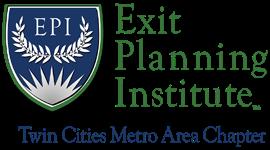
Twin Cities Metro Area chapter 763-208-9119
exit-planning-institute.org
Jessica Hawthorne, Administrator admin@e-officeconnection.com
Through the Certified Exit Planning Advisor (CEPA) credential, the Exit Planning Institute provides professional advisors with the content, tools, and training needed to gain more access to business owners, strengthen relationships, and become the most valued advisor.
Attracting and retaining the right people will fuel your growth Take the guesswork and headache out of the people side of your business with help from Optima HR Solutions

From people strategies to operations and tactics we work along side you as an extension of your team Take the HR hat off your head and let us help you win with better results through people
p. 651 426 0848 — www.exitplanstrategies.com
Dyanne Ross-Hanson: President e. drh@exitplanstrategies.com
Exit Planning Strategies, LLC, a firm dedicated to offering business owners objective, fee based, financial consulting in the development of intentional ownership transition plans. We direct an inter-disciplinary process to explore planning options, map realistic exit strategies and to develop an Action Checklist, to accomplish an owner’s unique objectives.

100 South 5th Street, Suite 1500 Minneapolis, MN 55402 www.bassford.com
612.333.3000
Bassford Remele is in the business of meeting legal challenges. Our trial lawyers solve disputes for corporate clients in Minnesota and across the nation and we have a depth of experience in many industry areas. When businesses seek solutions, from the conference room to the courtroom, they seek Bassford Remele.
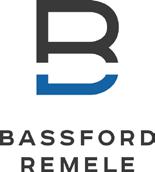

6385 Old Shady Oak Road, Suite 260 Eden Prairie, MN 55344 952.942.2922 | www.proutyproject.com
Kari Baltzer | stretch@proutyproject.com
Our leadership development engagements and cohort-based leadership programs – Prouty L3 and Prouty i•will – link behavior to team performance in your workplace through the lenses of Leading Self, Leading Others and Leading the Business. We focus on STRETCHing participants to lead business within internal and international divisions. Give us a call or stop by.

7575 Golden Valley Road, Suite 100 Minneapolis, MN 55427 763-546-8201 www.Lingate.com
Greg Loeschke — Managing Principal
Founded in 1945, Lingate Financial Group is a leading provider of lower middle market merger & acquisition advisory services, representing privately held businesses of all types with revenues of $5 – 50 million. Lingate helps business owners with marketbased valuations, business sales, mergers, acquisitions, recapitalizations, and internal transitions among family members, partners and management.
Peggy DeMuse, pdemuse@tnma.com; 651-288-1627
Lisa Meyer, lmeyer@tnma.com; 612-361-4918
www.sunbeltmidwest.com
We help business owners achieve their exit goals. True North Mergers and Acquisitions serves companies with $5 million to $150 million in revenue and their strategic advisors. We specialize in business owner exits, business valuations, and acquisition services in the lower middle market. If you are considering exiting your company, contact our team today.


PO Box 834
Lester Prairie, MN 55354-7832
www.coalition9.com
Aaron Eggert | aaron@coalition9.com

w: optimaadvisoryllc com
p: 612 547 5759
e: sschad@optimaadvisoryllc com
www.upsizemag.com
Leadership is lonely. We build your tribe. Coalition9 memberships provide peer advisory groups with an emphasis on personal and professional growth. As a member, you will experience interactive learning while connecting to the resources and people that will help you be your best. Our vision: Changing business nine leaders at a time™

3300 Edinborough Way, Suite 700
Edina, MN 55435
Brian Bellmont, President

612-255-1111, info@bellmontpartners.com www.bellmontpartners.com
Bellmont Partners helps growth-focused Minnesota organizations solve complex challenges. Our experienced communications strategists generate results that build brands, drive engagement and support business objectives.
Minnesota Sales Institute
301 – 4th Avenue South, Suite 272
Minneapolis, MN 55415 (612) 789-5700
www.mnsales.com
Contact: Scott Plum, Founder
Minnesota Sales Institute works with business owners, CEO’s and salespeople who are committed to learn, grow and change their selling skills and process to adapt to the current marketplace. We offer full and half day, interactive workshops; onsite classes; individual coaching and executive consulting.

2335 Highway 36 W Suite 202 Roseville, MN 55113
612-372-2178 • www.21stcb.com
At 21st Century Bank, we know what it takes for businesses to survive, grow, and prosper in today’s market. For over 100 years, we have been your community partner. A family-owned bank, with expertise in all SBA and conventional lending programs covering all stages of your business. We tailor solutions that respond to your unique business and banking needs.

6385 Old Shady Oak Road, Suite 260
Eden Prairie, MN 55344
952.942.2922 | www.proutyproject.com
Kari Baltzer | stretch@proutyproject.com
We start with a blank sheet of paper to elevate your clarity on vision and purpose, create alignment in your strategy to achieve your vision and gain commitment to execute. What are your “market, product/ service, people, and financial” strategies over the next 1-5 years? Can you articulate your strategic plan on one page? Join us in our Creative Think Tank to stretch your thinking and ignite your creativity.

Minneapolis, MN
Keyestrategies.com 763-350-5563
Julie Keyes, Founder/CEPA
“KeyeStrategies LLC advises business owners in Transition and Exit Planning. Julie Keyes is both a Certified Exit Planning Adviser (CEPA) and Value Growth Adviser. She is also a faculty member for the Exit Planning Institute’s Global organization and President of its local Chapter.”

8500 Normandale Lake Blvd., Suite 450 Minneapolis, MN 55437 952.844.0995 www.jnba.com
Cärin Viertel, Director of Client Services
Being a small business we understand the needs of small business owners. And with 40+ years of experience in providing conflict-free advice, our proactive and integrated approach allows our multi-generational teams to put clients first when delivering customized financial life planning and investment strategies to help maximize their resources.

TCF Tower, Suite #1600, 121 South Eighth St., Minneapolis, MN 55402 612-803-3169 * www.brimacomb.com
TCF Tower, Suite #1600, 121 South Eighth St., Minneapolis, MN 55402 612-803-3169 * www.brimacomb.com
Rick Brimacomb, rick@brimacomb.com
Rick Brimacomb, rick@brimacomb.com
7825 Washington Ave. S., Suite 500 Bloomington, MN 55439 R3c.com 866-927-0184 toll free
Chief Strategy and Relationship Officer
Chief Strategy and Relationship Officer
Results-oriented advisory firm with unparalleled access to executive suites and financing sources. Emerging companies and established professional services firms rely on our depth of knowledge and deep-network connections to grow client lists, assemble project resources and secure new sources of funding.
Results-oriented advisory firm with unparalleled access to executive suites and financing sources. Emerging companies and established professional services firms rely on our depth of knowledge and deep-network connections to grow client lists, assemble project resources and secure new sources of funding.


Move your business forward with investment capital generation, deep-level network connections and strategic refinement consultation from Brimacomb and Associates. We partner with emerging companies and professional services firms to offer unparalleled access to professional resources, executive suites and financing sources.
R3 Continuum (R3c) is a global leader in workplace behavioral health, crisis, and security solutions. We help enhance workplace behavioral health and performance, speed recovery from disruption, and maintain safety and security on all levels, with our best-practice, human-centered, and technology-enabled continuum of solutions.
www.brimacomb.com
612.803.3169 • rick@brimacomb.com









